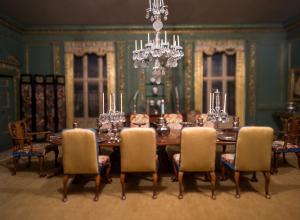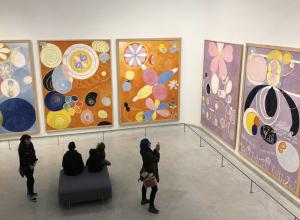Jewelry’s contribution to our understanding of ancient art history is especially evident through the archaeological finds of Egypt. You can glean information from ancient Egyptian statues and wall-paintings, but these art forms pale in comparison to the spectacularly rich jewelry found in tombs. Among the most famous ancient funerary treasures ever discovered is that of Pharaoh Tutankhamun: the young king’s mummy was covered in gold from head to toe, including a heavy gold mask with colorful inlay, fingers and toes fitted with gold caps, and gold sandals on his feet. Gold mines were abundant in Ancient Egypt and, because it does not tarnish, gold was considered the “flesh of the gods,” making this dazzling metal perfect to protect the body and keep it intact in his journey to the afterlife.

Vulture pectoral, Egyptian Museum, Cairo.
There is a saying that every piece of jewelry tells a story. In a new Art & Object series, we’ll take a look at some of history’s greatest jewelry stories, showing you how and why jewelry is such a powerful artistic, cultural, and historical artifact. Western and non-western cultures from prehistoric times up until today have been making, collecting, and wearing jewelry for multiple purposes beyond adornment, including political, economic, religious, and social reasons. We will be sharing stories that show what jewelry adds to art history: from excavated gold and amuletic jewelry from Egyptian tombs; jewelry in the Renaissance, when it was considered as valuable to collect and display as painting and sculpture; to early nineteenth-century gem and cameo carving, under the patronage of Napoleon and his political ambitions.
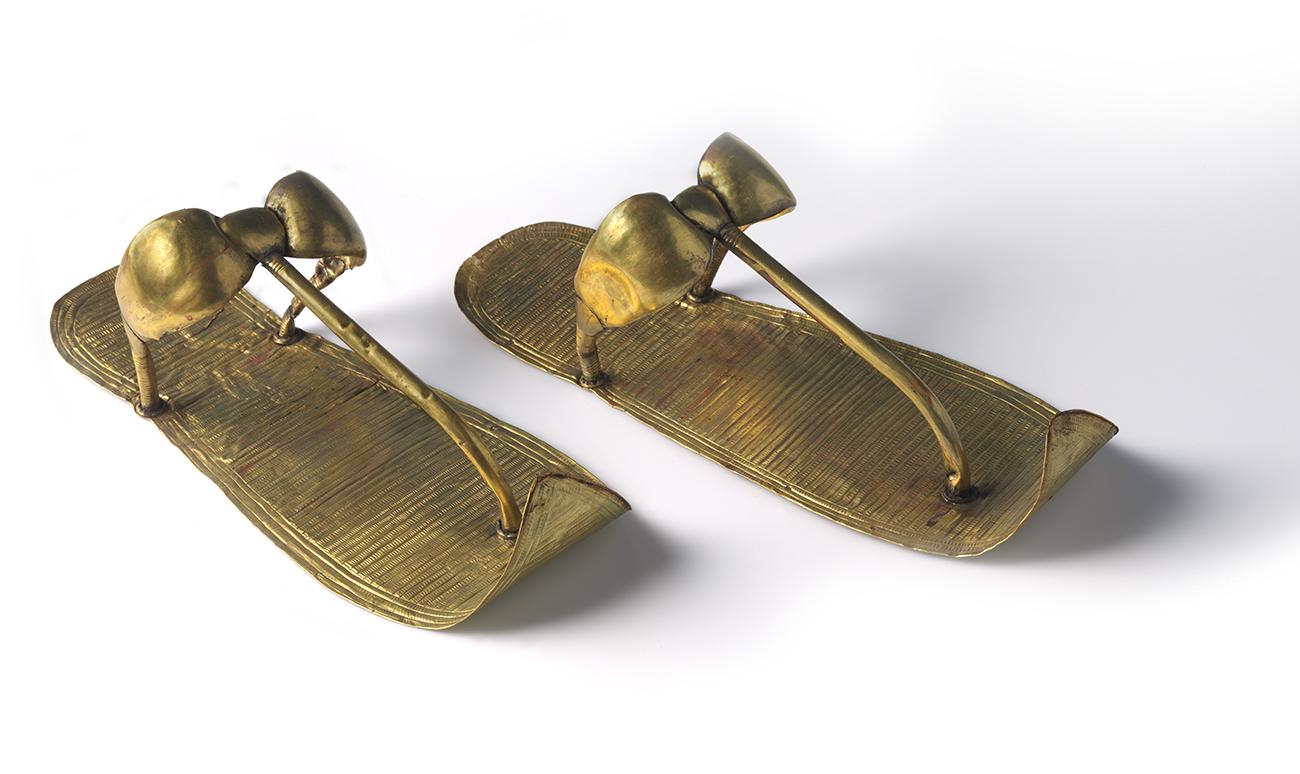
Tutankhamun’s gold sandals, c. 1336–1326 BCE. Egyptian Museum, Cairo.

Tutankhamun’s pectoral with three scarab beetles, c. 1336–1326 BCE. Egyptian Museum, Cairo.
The Egyptian belief in immortality was not only safeguarded through gold pieces: multiple amulets were placed over the neck, breast, and heart of the mummy, to ensure the successful passage to eternal life. In Tutankhamun’s case, 143 items were found amongst the linen bandages wrapped around his body, with a large number of pieces displaying the scarab motif—the most popular in Egyptian amuletic jewelry and a symbol of the sun and rebirth, since the beetle pushing his dung ball was likened to the sun moving across the sky each day. Amulets were indeed essential to bring good fortune and protection for both the dead and the living, whether of royal or non-royal class.
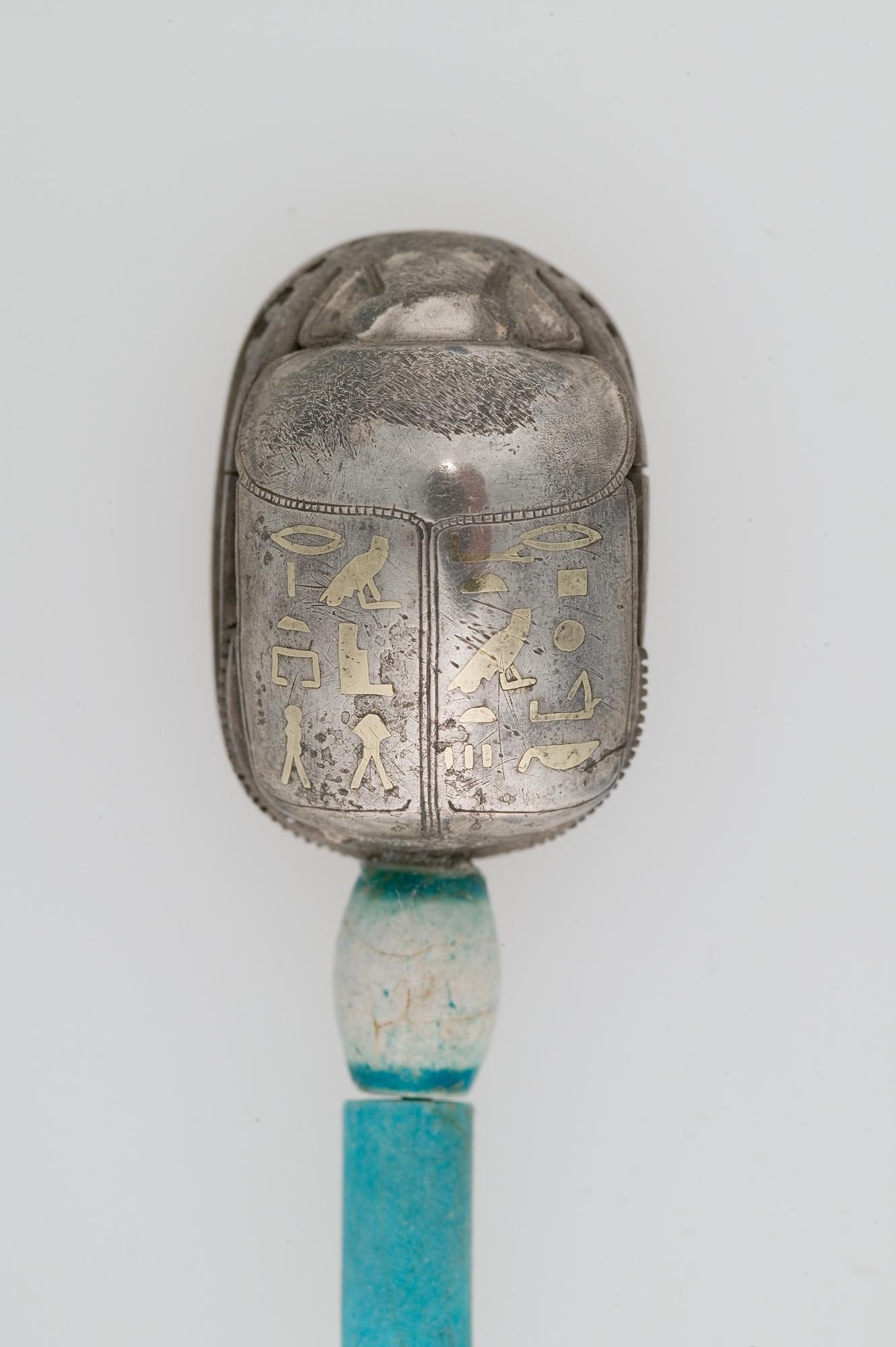
Wah’s Scarab Amulet, c. 1981–1975 BCE. Silver, electrum, glazed steatite, linen cord.
Before Tutankhamun’s time, around 2000 BCE, a scribe named Wah, who managed the large estate of a high official, was buried with three amuletic scarabs and bead bracelets over his wrists. The most impressive is a large silver scarab with hieroglyphs, a combination of seal and amulet now at the Metropolitan Museum of Art: the left-wing inscription identifies the scribe Wah as the estate manager of the high official Meketre, whose name appears on the right wing.
Thus, gold, silver, and amuletic jewelry were not merely adornment, but symbolic and magical for ancient Egyptians, giving them a sense of protection and power in funerary rituals and in life. In fact, not all jewelry was found with mummies and scholars tend to agree that jewelry found outside the coffin was most definitely worn during life. In the case of Queen Hetepheres I, wife of Snefru and mother of Cheops, builder of the largest pyramid, her coffin was found empty, while some of her jewelry survived in boxes.
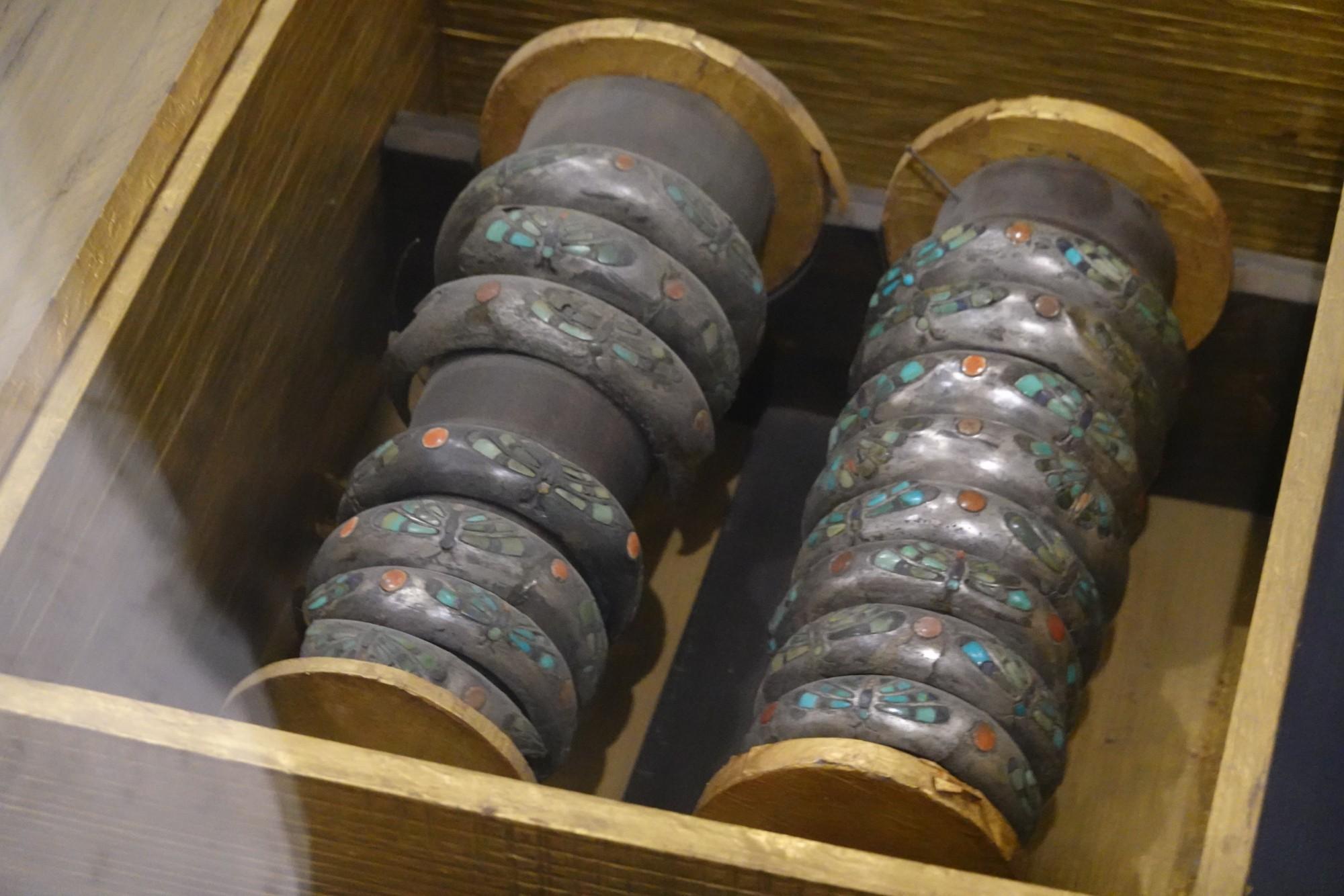
Bracelet box (reconstructed) of Queen Hetepheres I, 2575–2528 BCE. Egyptian Museum, Cairo, JE 53265, 53266-81
One stunning example is a small jewelry box containing twenty silver bracelets from c. 2550 BCE, whose different diameters suggest that the Queen wore them from the forearm to the wrist. Made of silver inlaid with semi-precious stones, they represent butterflies: the outspread wings in lapis lazuli, the head in turquoise and tail in carnelian. Like the scarab beetle, butterflies symbolized rebirth, particularly since these creatures undergo a complete metamorphosis: from a caterpillar to a chrysalis, from which the winged adult butterfly emerges. The Queen’s power and protection was further guaranteed through the symbolic significance of the inlaid stones, given that turquoise, lapis lazuli, and carnelian were all thought to have amuletic powers.

Bracelet of Queen Hetepheres, 2575–2528 BCE. Silver, lapis lazuli, turquoise, carnelian. Egyptian Museum, Cairo, JE 53266
Death was not an end but a new beginning for the Egyptians, who ensured their safe and eternal journey by wearing or keeping close their most prized, protective, and symbolic jewelry, as exemplified in the above gold and silver pieces, scarab amulets and butterfly bracelets from the tombs of King Tutankhamun, the state manager Wah and Queen Hetepheres. Based on the archaeological records, and despite today’s misconceptions about jewelry being purely adornment and mostly feminine, there is no doubt that both men and women of different social class and status have been wearing jewelry for powerful reasons from the earliest times.









